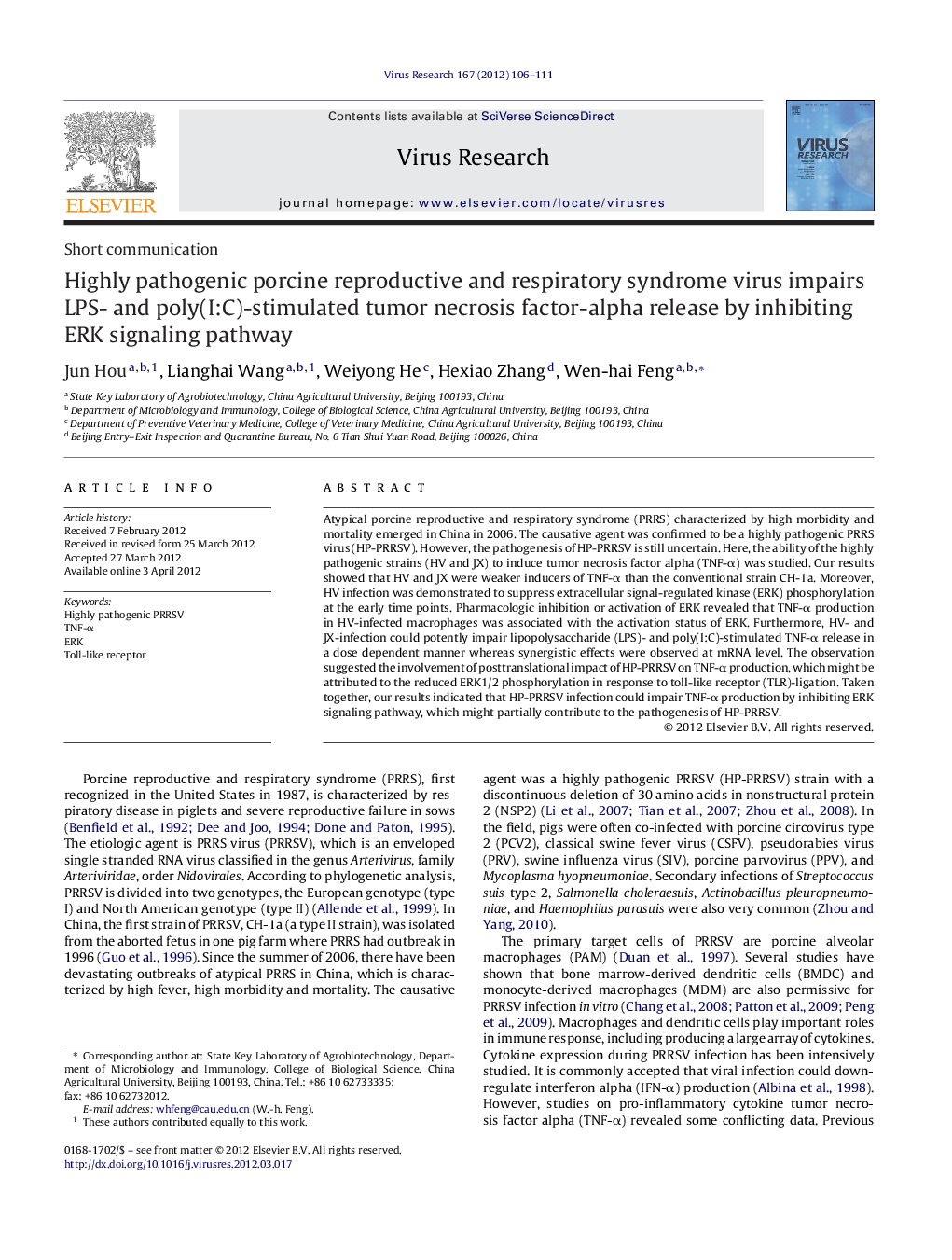| کد مقاله | کد نشریه | سال انتشار | مقاله انگلیسی | نسخه تمام متن |
|---|---|---|---|---|
| 3428768 | 1228226 | 2012 | 6 صفحه PDF | دانلود رایگان |

Atypical porcine reproductive and respiratory syndrome (PRRS) characterized by high morbidity and mortality emerged in China in 2006. The causative agent was confirmed to be a highly pathogenic PRRS virus (HP-PRRSV). However, the pathogenesis of HP-PRRSV is still uncertain. Here, the ability of the highly pathogenic strains (HV and JX) to induce tumor necrosis factor alpha (TNF-α) was studied. Our results showed that HV and JX were weaker inducers of TNF-α than the conventional strain CH-1a. Moreover, HV infection was demonstrated to suppress extracellular signal-regulated kinase (ERK) phosphorylation at the early time points. Pharmacologic inhibition or activation of ERK revealed that TNF-α production in HV-infected macrophages was associated with the activation status of ERK. Furthermore, HV- and JX-infection could potently impair lipopolysaccharide (LPS)- and poly(I:C)-stimulated TNF-α release in a dose dependent manner whereas synergistic effects were observed at mRNA level. The observation suggested the involvement of posttranslational impact of HP-PRRSV on TNF-α production, which might be attributed to the reduced ERK1/2 phosphorylation in response to toll-like receptor (TLR)-ligation. Taken together, our results indicated that HP-PRRSV infection could impair TNF-α production by inhibiting ERK signaling pathway, which might partially contribute to the pathogenesis of HP-PRRSV.
Journal: Virus Research - Volume 167, Issue 1, July 2012, Pages 106–111